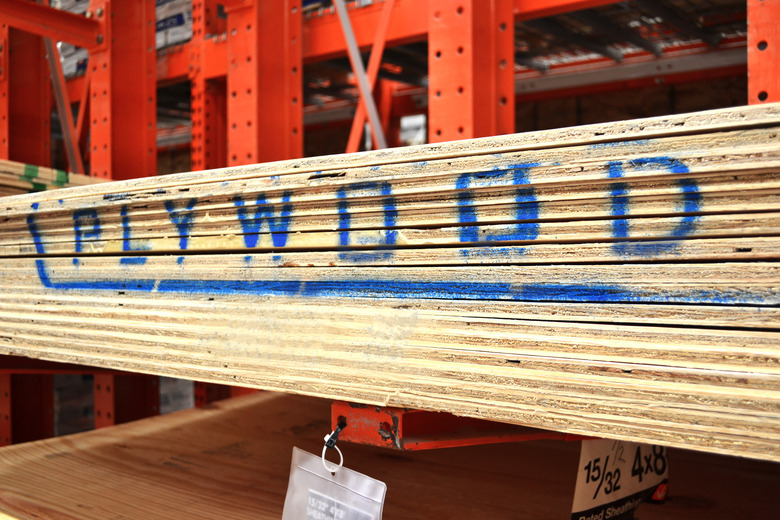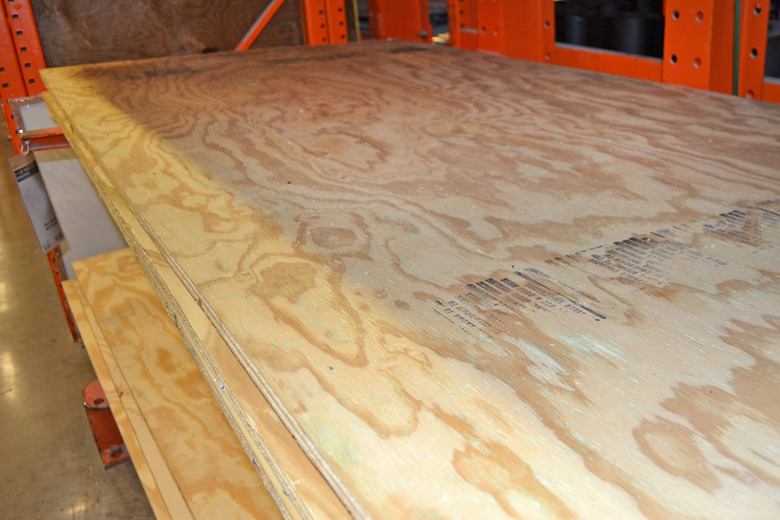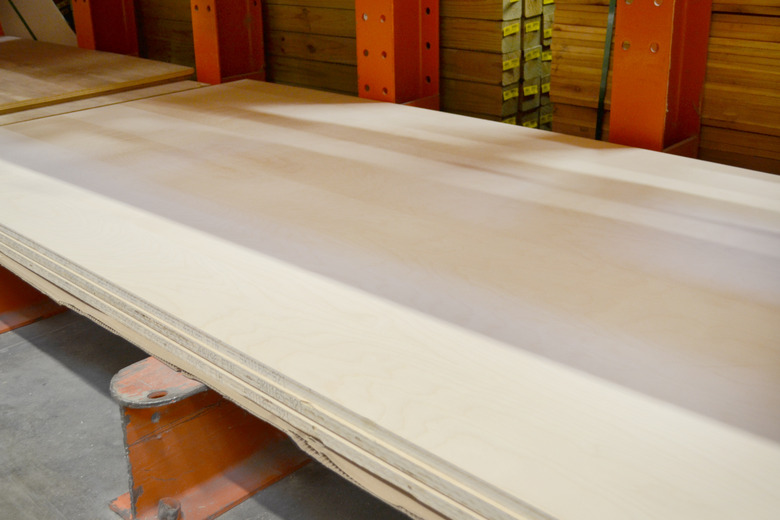Blondewood Vs. Birch Plywood
Blondewood is a marketing term. There is no such thing as a blondewood tree. Commercial dealers coined the term "blondewood," or "whitewood," to represent whitish, affordable plywood, which typically is imported with unspecified species. Birch and maple are two domestic species that resemble blondewood or whitewood plywood. Ash or hickory also may appear blond in color.
Blondewood Anatomy
Blondewood Anatomy
When plywood is represented as blondewood, it's typically cheaper, lighter and sometimes less than perfect. It may have any species of exterior veneers on both sides that are off-white to almost stark white in color. Plywood is made from several layers of wood veneer or wood byproducts glued together to form layers — the more layers the better. Blondewood may have only four layers, which typically is not enough to create a balance and prevent the plywood from warping. The dimensions and quality of blondewood may be inconsistent.
Birch Anatomy
Birch Anatomy
The majority of birch plywood is manufactured domestically in the United States. With varying degrees of quality, birch plywood creates more choices than blondewood plywood. Ranging from prime or A-1 — which is top of the line — to shop grade, birch plywood has more price-range choices than blondewood. For direct comparison, standard-grade shop birch is the closest comparison to blondewood plywood. Shop-grade plywood typically has five layers. The center layer adds balance to the plywood. Blondewood plywood, typically with only four layers, is considered less structurally balanced and tend to warp when cut. When blond plywood has more than four layers, it's typically thinner and lighter.


